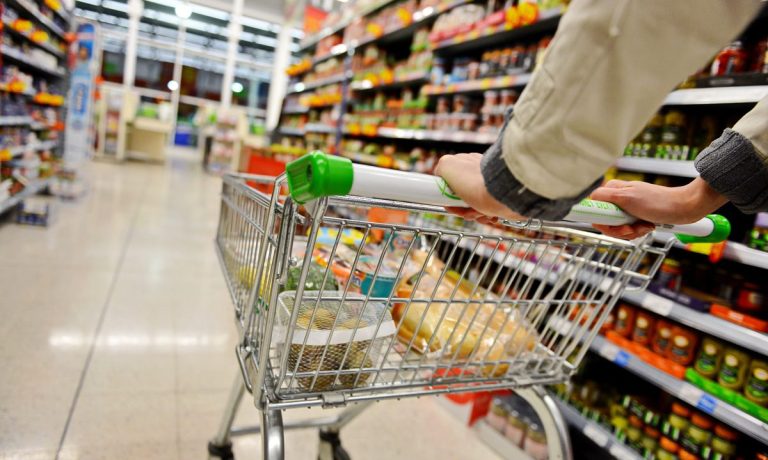Grocers Offer In-Store App Features to Boost Omnichannel Shopping

Even in-store shopping is now a digital experience for many shoppers, and savvy grocers are taking advantage of this trend to boost loyalty while learning more about their customers’ behavior.
Twenty-eight percent of U.S. consumers used a smartphone the last time they shopped inside a store, according to data from The 2022 Global Digital Shopping Playbook series, a PYMNTS and Cybersource collaboration, derived from a survey of 3,100 businesses and over 13,000 consumers across six countries. The most common reason U.S. shoppers use their mobile device in stores is for searching for offers and discounts followed by finding product information.
You may also like: The Data Point: 28% of US Consumers Used a Mobile Phone During Their Last Store Trip
Noting this trend, leading grocers are providing in-app features designed for brick-and-mortar shoppers. Walmart, the largest grocery retailer in the world, provides store maps, a feature by which consumers can scan bar codes to check prices themselves and more. Similarly, Kroger offers a “Store Mode” featuring a tool to locate items, access to in-store payment methods and more. Many grocers are also integrating couponing and shopping-list-building capabilities into their apps.
The vast majority of grocery shoppers continue to prefer to shop in stores, so boosting the in-store experience with mobile features could go a long way for grocers in terms of encouraging digital adoption, which in turn allows grocers to communicate with and learn more about those customers.
Research from PYMNTS’ January study, Decoding Customer Affinity: The Customer Loyalty to Merchants Survey 2022, created in collaboration with Toshiba Global Commerce Solutions, which featured the results of a census-balanced survey of more than 2,000 U.S. consumers, found that 82% of grocery shoppers’ most frequent purchasing method continues to be in-store shopping.
Read more: To Win Grocery Shoppers’ Loyalty Today, Brands Must Think Brick-and-Mortar, Data Shows
Moreover, grocers that do not provide digital convenience in stores risk falling behind.
“You look at a grocery store and just stand in an aisle and watch people shop — the human behavior you see in the store doesn’t look a lot different than it did 10 years ago, or 20 or 50 years ago,” John Ross, president and CEO of the Independent Grocers Alliance (IGA), told PYMNTS in a December 2021 interview. “That doesn’t mean the shopper is the same, and those shoppers have a digital relationship with most of the brands and services in their lives, and so their expectation of our industry to be able to have a digital connection with them is growing and growing and growing.”
Related news: Supermarkets Rethink Physical and Digital Aisles for Grocery’s Connected Future
Additionally, with geo-tracking features, grocers could potentially leverage consumers’ desire to use their mobile devices in stores to gather behavioral data, putting together a clearer picture of how shoppers move through the store. Retailers leveraging computer vision or smart cart checkout already have such capabilities and are seeing the benefits. Grocers could even notify shoppers of relevant promotions as they pass certain products.
“This is what the next generation of the in-store journey should look like,” Raz Golan, CEO and co-founder of grocery store technology company Shopic, told PYMNTS in an August 2021 interview. “All these data points are ones that we just couldn’t measure very well until today, and it opens a whole new world of data analytics.”
See also: Smart Carts Bring Data Analytics Into Grocery Aisles